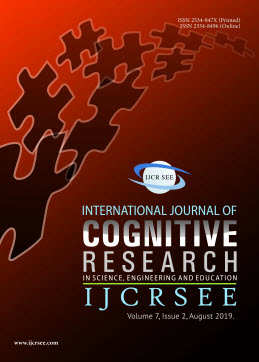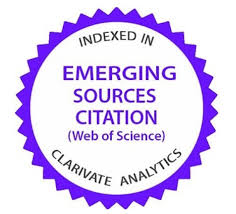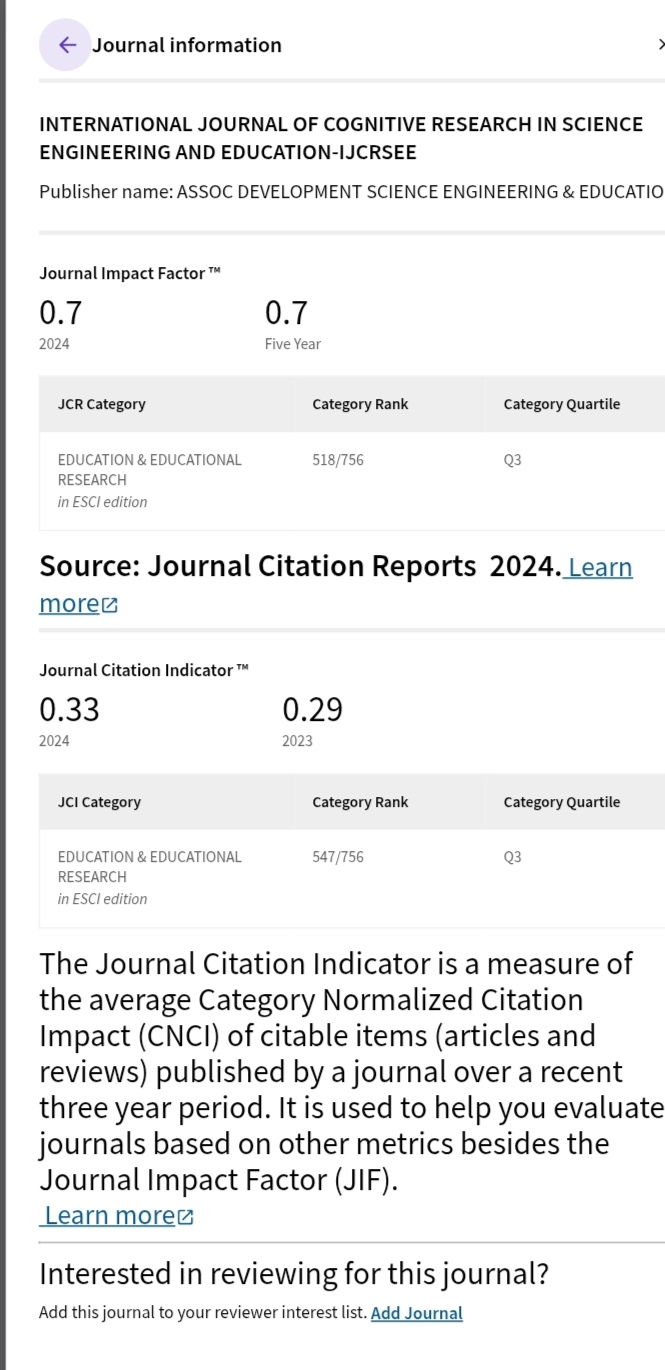EDUCATION, TECHNOLOGICAL CHANGES AND ECONOMIC DEVELOPMENT OF BOSNIA AND HERZEGOVINA
DOI:
https://doi.org/10.5937/IJCRSEE1902077PKeywords:
education, technological readiness, innovations, economic development, Bosnia and HerzegovinaAbstract
Accumulation of knowledge, the role of education and innovations in the stimulation of economic development are important for understanding the endogenous theory of growth. The aim of this paper is to determine the strength and direction of relations between independent variables of education, technological development, innovations, foreign investments and the economic growth of Bosnia and Herzegovina (B&H). The relations between variables are assessed by multiple regression analysis for the period 2005 - 2017. GDP per capita (pc), as a measure of general wellbeing and economic development is a dependent variable of the regression model. Education Years Average, Technological readiness and Innovations are explanatory variables, whereas Foreign investments and Macroeconomic environment are control variables. The results indicate statistical significance of variables Education Years Average, Technological readiness and Innovations. The first two variables indicate a positive effect on the economic development, whereas Innovations have a negative effect on the economic development. The control variables are statistically insignificant. Therefore, more investment is recommended in the field of education, science and research. Institutions should be more developed and scientific-research systems should be harmonized with the European Union. It is the only way for B&H to be able to respond to global challenges when it comes to competitiveness, export and the GDP growth. Examples and experiences of this country can be useful for research activities in similar post-transition countries.
Downloads
References
Acemoglu, D., & Cao, D. (2015). Innovation by entrants and incumbents. Journal of Economic Theory, 157, 255-294. https://doi.org/10.1016/j.jet.2015.01.001
Aghion, Ph., & Howitt P. (1992). A Model of Growth through Creative Destruction. Econometrica, vol. 60(2), pp. 323-51. https://doi.org/10.2307/2951599
Aghion, P. & Antonin, C. (2018). Technical Progress and Growth since the Crisis. Revue de l’OFCE, 157(3), 55-68. https://doi.org/10.3917/reof.157.0055
Aghion, P., Akcigit, U., & Howitt, P. (2015). The Schumpeterian growth paradigm. economics, The Annual Review of Economics, 7(1), 557-575. https://doi.org/10.1146/annurev-economics-080614-115412
Bezić, H., & Karanikić, P. (2014). Technology transfer, FDI and Economic Growth in the EU Transition Countries and the Republic of Croatia. Ekonomska misao i praksa, 23(2), 463-482. Retrieved from: https://hrcak.srce.hr/file/193322
Dosi, G., Pavitt, K., & Soete, L. (1990). The economics of technical change and international trade. New York University Press.
Erić, O. (2017). Analysis of the Effects of the EU Official Development Assistance to the Western Balkans. Acta Economica, 15(26), 123-139. https://doi.org/10.7251/ace1726123e
Freeman, C., & Soete, L. (2009). Developing science, technology and innovation indicators: What we can learn from the past. Research policy, 38(4), 583-589. https://doi.org/10.1016/j.respol.2009.01.018
Freeman, Ch. (2013). Economics of industrial innovation. London: Routledge. https://doi.org/10.4324/9780203064474
Fu, X., Pietrobelli, C., & Soete, L. (2011). The role of foreign technology and indigenous innovation in the emerging economies: technological change and catching-up. World development, 39(7), 1204-1212. https://doi.org/10.1016/j.worlddev.2010.05.009
Grant, C. (2017). The Contribution of Education to Economic Growth. K4D Helpdesk Report. Institute of Development Studies. Brighton, UK.
Greif, A., & Mokyr, J. (2017). Cognitive rules, institutions, and economic growth: Douglass North and beyond. Journal of Institutional Economics, 13(1), 25-52. https://doi.org/10.1017/S1744137416000370
Grossman G.M., & Helpman E. (1991). Innovation and Growth in the Global Economy, MIT Press, Cambridge.
Hanushek, E. A. (2016). Will more higher education improve economic growth?. Oxford Review of Economic Policy, 32(4), 538-552. https://doi.org/10.1093/oxrep/grw025
Hekkert, M. P., Suurs, R. A., Negro, S. O., Kuhlmann, S., & Smits, R. E. (2007). Functions of innovation systems: A new approach for analysing technological change. Technological forecasting and social change, 74(4), 413-432. https://doi.org/10.1016/j.techfore.2006.03.002
Kesici-Çalışkan, H. (2015). Technological Change and Economic Growth. Procedia - Social and Behavioural Sciences, 195, pp. 649-654. https://doi.org/10.1016/j.sbspro.2015.06.174
Kochetkov D. M., Larionova V. A., Vukovic D. B. (2017). Entrepreneurial Capacity of Universities and Its Impact on Regional Economic Growth. Ekonomikaregiona [Economy of Region], 13(2), 477-488. https://doi.org/10.17059/2017-2-13
Koop, G. (2003). Bayesian Econometrics. John Wiley & Sons Ltd, The Atrium, Southern Gate, Chichester. West Sussex, England
Kuznets, S. (1960). Economic growth of small nations. In Economic consequences of the size of nations (pp. 14-32). Palgrave Macmillan, London. https://doi.org/10.1007/978-1-349-15210-0_2
Lauder, H. (2015). Human capital theory, the power of transnational companies and a political response in relation to education and economic development. Compare: A Journal of Comparative and International Education, 45(3), 490-493. https://doi.org/10.1080/03057925.2015.1027515
Lucas Jr, R. E. (1988). On the mechanics of economic development. Journal of monetary economics, 22(1), 3-42. https://doi.org/10.1016/0304-3932(88)90168-7
Lucas Jr, R. E. (2015). Human capital and growth. American Economic Review, 105(5), 85-88, http://dx.doi.org/10.1257/aer.p20151065
Malerba, F., & Cantner, U. (2006). Innovation, Industrial Dynamics and Structural Transformation. Journal of Evolutionary Economics 16(1–2). https://doi.org/10.1007/s00191-005-0011-3
Pecea, A.M., Ecaterina, O., Oros, S., & Salisteanu, F. (2015) Innovation and economic growth: An empirical analysis for CEE countries. Procedia Economics and Finance, 26, 461 – 467. https://doi.org/10.1016/s2212-5671(15)00874-6
Popović, G. (2016). Ekonomija Evropske unije (eng. Economics of the European Union). Institute for textbooks and teaching aids, East Sarajevo.
Popović, G., & Erić, O. (2018). Economic development of the Western Balkans and European Union investments. Economic research-Ekonomska istraživanja, 31(1), 1539-1556. https://doi.org/10.1080/1331677X.2018.1498009
Romer, P. M. (1994). The origins of endogenous growth. Journal of Economic perspectives, 8(1), 3-22. https://doi.org/10.1257/jep.8.1.3
Saviotti, P. P., Pyka, A., & Jun, B. (2016). Education, structural change and economic development. Structural Change and Economic Dynamics, 38, 55-68. https://doi.org/10.1016/j.strueco.2016.04.002
Škare, M., & Tomic, D. (2014). Examining the link between innovation, productivity and growth: A global view. Amfiteatru Economic Journal, 16(36), 606-624. Retrieved from: http://hdl.handle.net/10419/168847
Solow, R. M. (1956). A contribution to the theory of economic growth. The quarterly journal of economics, 70(1), 65-94. https://doi.org/10.2307/1884513
Smits, R., & Kuhlmann, S. (2004). The rise of systemic instruments in innovation policy. International journal of foresight and innovation policy, 1(1-2), 4-32. https://doi.org/10.1504/ijfip.2004.004621
Spitsin, V., Mikhalchuk, A., Spitsina, L., & Vukovic, D. B. (2018). Foreign-owned companies in countries with an unstable economy: The case of the automotive industry in Russia. Journal of International Studies, 11(3). 57-69. https://doi.org/10.14254/2071-8330.2018/11-3/5
Toivanen, O., & Väänänen, L. (2016). Education and invention. Review of Economics and Statistics, 98(2), 382-396. https://doi.org/10.1162/rest_a_00520
Tomić, D. (2012). Relationship between technological progress and economic growth; Historical overview. In: Quality. Innovation. Future. Moderna organizacija v okviru Univerze v Mariboru - Fakultete za organizacijske vede, Maribor, pp. 1290-1299. ISBN 978-961-232-253-3. https://doi.org/10.18690/978-961-286-020-2.97
United Nations Development Programme (2019). Human Development Reports, Human Development Data. Retrieved from: http://hdr.undp.org/en/data
Wang, Y., & Liu, S. (2016). Education, Human Capital and Economic Growth: Empirical Research on 55 Countries and Regions (1960-2009). Theoretical Economics Letters, 6(02), 347-355. https://doi.org/10.4236/tel.2016.62039
Woessmann, L. (2016). The economic case for education. Education Economics, 24(1), 3-32. https://doi.org/10.1080/09645292.2015.1059801
World Bank (2019). World development indicators. Topic: Economy & Growth, Infrastructure, Labour, Trade. Retrieved from: http://data.worldbank.org/data-catalog/world-development-indicators
World Economic Forum (2019). The global competitiveness reports 2005–2018. World Economic Forum Geneva. Retrieved from: http://www.weforum.org/en/index.htm
World Meters. (2017). Countries in the world by population. Retrieved January 10th 2019. from: www.worldometers.info/world-population/population-by-country/
Published
How to Cite
Issue
Section
License
Copyright (c) 2019

This work is licensed under a Creative Commons Attribution-NonCommercial-NoDerivatives 4.0 International License.











